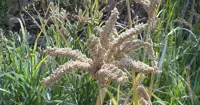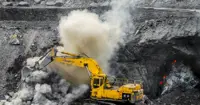World Rubber Congress opens at Kochi
By Our Corporate Bureau | 21 Jun 2004
Kochi: World Rubber Congress opened here on Thursday June 17. The two-day meet will discuss various aspects of the sector.
Speakers at the congress pointed out that rubber price was fluctuating for the past eight years and now it has come to a stand still with Rs.64 a kg for the RSS-4 category. The current price was close to the highest peak rubber price ever had , back in the mid-1995.
The congress, which from next year would be an annual event, has been organised by Tefla's Conferences and Events in partnership with leading players in the sector. Delegates from plantation, manufacture, trading and research fields apart from experts and administrators are participating in the meet.
Dr B.C Sekhar, an international rubber market expert, said natural rubber faced no danger from synthetic rubber as long as the prices did not breach the Rs 90-100 a kg band.``Once the price breaches the Rs 90-100 a kg band, then synthetic rubber becoming a viable option arises,'' he said.
He said that the current global price was very good but there was still scope for further rise. At the present price of natural rubber, extensive manufacture of synthetic rubber was uneconomical. He said the domestic demand for rubber in India was set to grow with the laying of more and more highways and roads which would promote production of more vehicle and hence of more tyres. In view of this, the rubber growers could look ahead for a bright future.
The Rubber Board chairman, S.M. Desalphine, said that though global production would be in excess of demand this year and the next, it would not have much of an impact on the price. Since the demand was growing and since production could not grow unlimited In the long run, the price was likely to go up. He suggested that the price of natural rubber should be below the `threshold of substitution' in order not to trigger extensive manufacture and use of synthetic rubber.
This scenario, however, was unlikely in the near future. India was the fourth largest producer and consumer of natural rubber. China was the top user, followed by the U.S. Rubber productivity was the highest in India. During the first half of this month, average price of RSS-4 increased to Rs 60.45 a kg from Rs 58.55 in May and Rs 57.85 in April, he said.
K.K. Abraham, president of Rubber Marketing Federation, pointed out that the rubber growers now had no complaints about the price they were getting. But, he sought Government support to promote exports. Financial incentive from the Government was necessary for at least five years to establish India as a major player in the international rubber trade.
T.
Vidyasagar, head of the Comex, assured the growers that
the future of rubber was bright as more road and more
vehicles were being
made in the country. Kerala, which grows 90 per cent of
India's total rubber output, that the current feel-good
atmosphere in the rubber sector is unlikely to change
soon.
Latest articles
Featured articles

The remarkable Ratan Tata
By Kiron Kasbekar | 23 Oct 2024
One newspaper report of Ratan Tata’s passing away showed an old photo of him climbing into the cockpit of a Lockheed Martin F-16 fighter.

Lighter than air, yet very, very powerful
By Kiron Kasbekar | 03 Jan 2024
In March 2013 Chinese scientists pulled off a remarkable feat. They created the world’s lightest aerogel. Tipping the scales at a mere 0.16 milligrams per cubic centimeter – that’s a sixth of the weight of air!

COP28 explained: A closer look at COP28's climate change solutions
By Aniket Gupta | 27 Dec 2023
The 28th United Nations Climate Change Conference, also known as COP28, took place from 30th November 2023, to 13th December 2023, at Expo City in Dubai, United Arab Emirates.

What is a Ponzi scheme?
By Aniket Gupta | 06 Dec 2023
Ponzi schemes have long captivated the public imagination, drawing unsuspecting investors into a web of illusion and deception.

The Rise and Rise of HDFC Bank
03 Jul 2023
HDFC, which surged ahead of global majors like HSBC Holdings Plc and Citigroup Inc and left Indian peers like State Bank of India and ICICI Bank in market capitalisation, now ranks fourth largest among the world’s most valuable banks, after JPMorgan Chase & Co, Industrial and Commercial Bank of China Ltd and Bank of America Corp

India’s Millet Revolution To Enrich Global Food Basket
02 Apr 2023
Millets, a healthier and cheaper substitute to wheat and rice, are indigenous to many parts of the world, especially in the semiarid tropics of Asia and Africa, and offers a big scope for expanding production and consumption in the foodgrain deficient African continent

Market predator Hindenburg preys on Adani stock
06 Mar 2023
Almost a month after the damning report of short-seller Hindenburg Research on the Adani Group that claimed that the seven stocks within the group were about 85 per cent overvalued, one of the group's stocks, Adani Total Gas, closed at Rs835 on the BSE, down nearly 79 per cent from its 24 January level, almost close to reaching that valuation
Business History Videos

History of hovercraft Part 3...
By Kiron Kasbekar | Presenter: Kiron Kasbekar

History of hovercraft Part 2...
By Kiron Kasbekar | Presenter: Kiron Kasbekar

History of Hovercraft Part 1...
By Kiron Kasbekar | Presenter: Kiron Kasbekar





















